Tooltester is supported by readers like yourself. We may earn an affiliate commission when you purchase through our links, which enables us to offer our research for free.
If you work in marketing, it is likely that you have heard the word “content” quite a few times over the past couple years. This buzzworthy term has more or less come to stand for anything of value on the web: blog posts, website pages, infographics, the list goes on.
Thoughtful, useful content can be a great tool for engaging leads, building a website following, and driving advocacy. But when consumers hit the web they are bombarded with hundreds of websites vying for their attention. Between social networks, email, advertisements, and regular web surfing, it is fair to say the world of “content” is highly saturated.
This presents an opportunity for crafty marketers such as yourself — by conducting the right research, you can cut through the clutter and offer your audience content that they actually want, in turn increasing your websites visitation and reader loyalty.
So… how do we figure out what people want? Cue Google Trends!
What is Google Trends?
This tool provides direct insight into how searchers all over the world use Google by allowing you to input a search term and assess how search has grown over time. You can also compare terms to one another, identify related terms, and identify news that is trending in search.
For example, in the visual below we see how searches for “content marketing” have grown over time. Growing steadily from 2009 to 2012, the popularity of this term really started to pick up in 2013 and continued to skyrocket ever since.
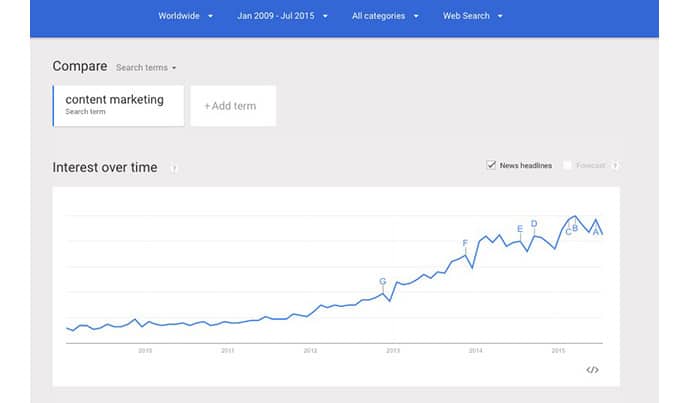
This is just the beginning of the treasure trove of insights you can glean from Google Trends Below we’ve outlined our 5 favorite ways we use Google Trends to gain direct insight into the mind of your consumer.
Tip 1: Learn what is “trending” on the internet.
The front page of Google Trends effectively acts as the “front page of the internet”, telling you what was most searched over the past 24 hours and highlighting any specific trends. This post was written the day after the Miss USA pageant, so we can see that is one of the most popular topics being searched for on the internet today.
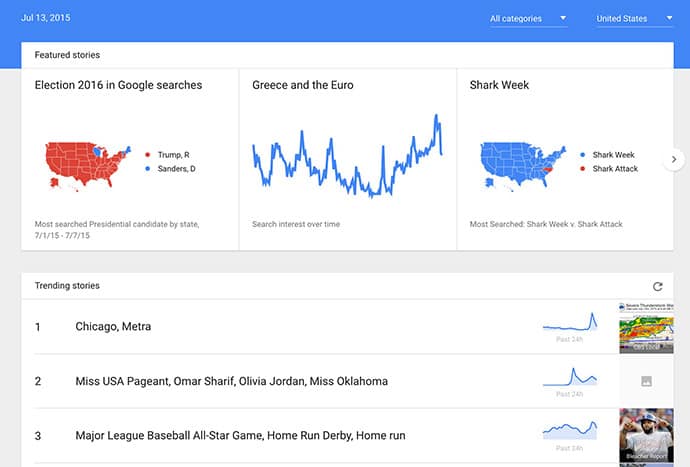
Tip 2: Identify what is trending in your vertical.
You may know that your customers are interested in a certain subject, like “facebook ads”, but still not be sure about what specifically they want to learn about. By doing a search for Facebook, we can scroll down to the related searches to see that people are most interested in learning about the cost of ads, which ads are the best, and what the targeting options are. This kind of research is also smart from an SEO perspective, as you can then craft content that you know has the greatest search volume.
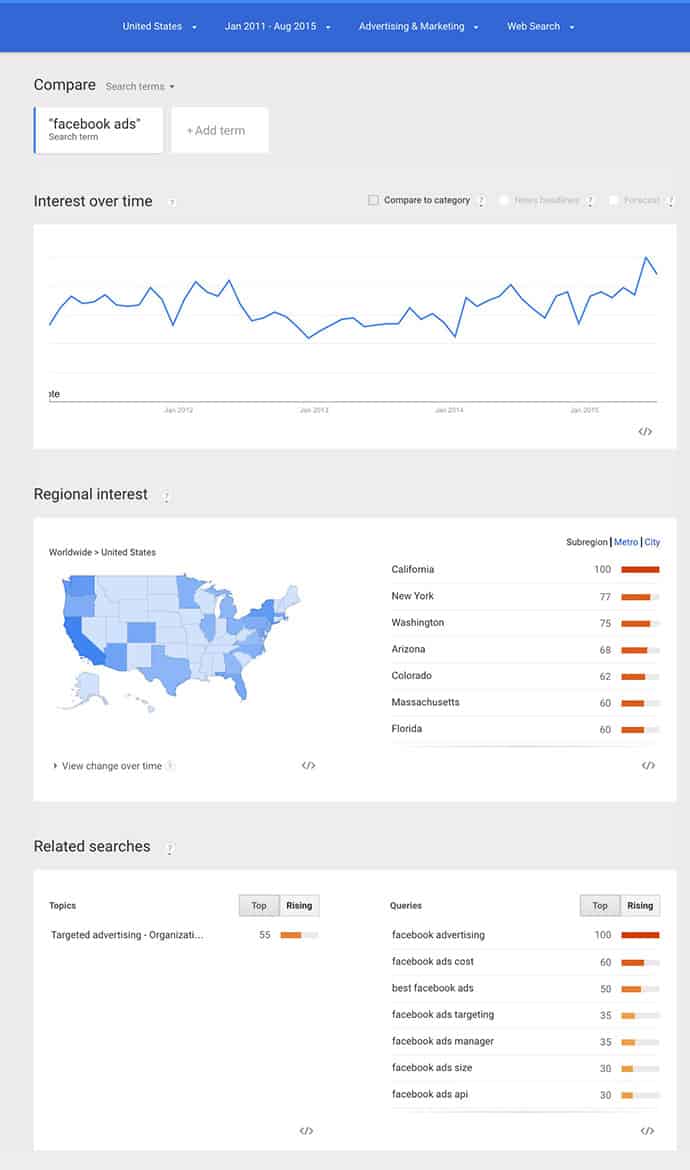
Tip 3: Identify seasonality of consumer interest.
Using the “interest over time” visual we can see when historically searches for a given term spiked or dropped off. As expected, searches for “jet skis” historically peak during summer, but there is still significant interest in the surrounding shoulder months. Use this information to develop timely and relevant content calendars.
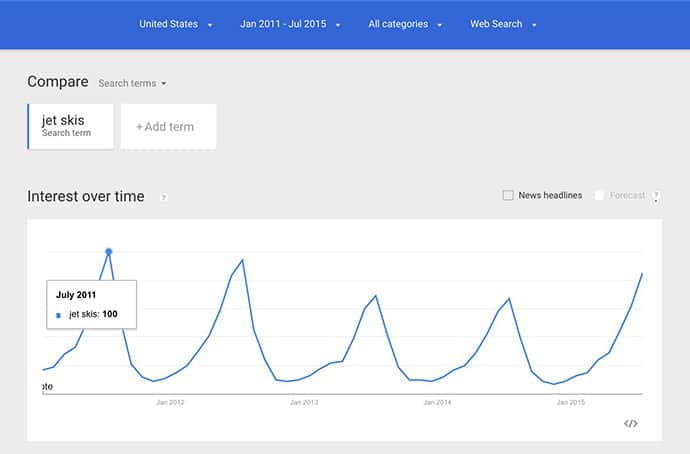
Tip 4: Compare a couple subjects to identify what is most popular.
Deciding between a couple different topics? Compare popularity to figure out what has the most interest. According to the example below, kayaks beat out paddleboards and jet skis as the preferred way to experience the water this summer.
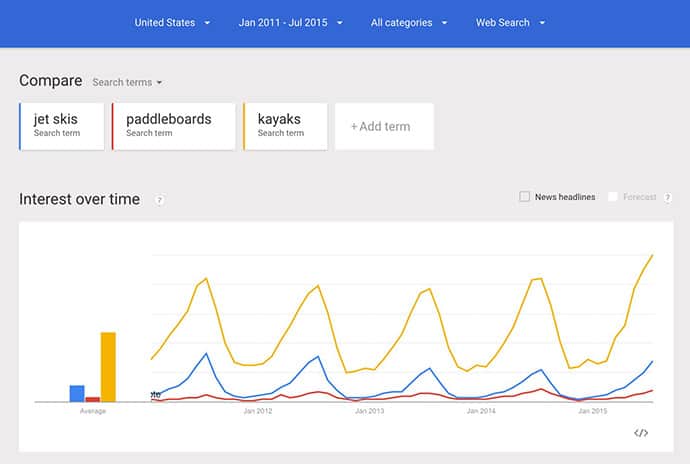
Tip 5: Identify the markets most interested in your offering.
Using the “regional interest” section, you can see which markets search for a given topic the most. In the example below, we see that people that live in Florida and South Carolina are among the most interested in “pet friendly hotels” in the United States. We can use this information to better understand our audience and craft our content accordingly.
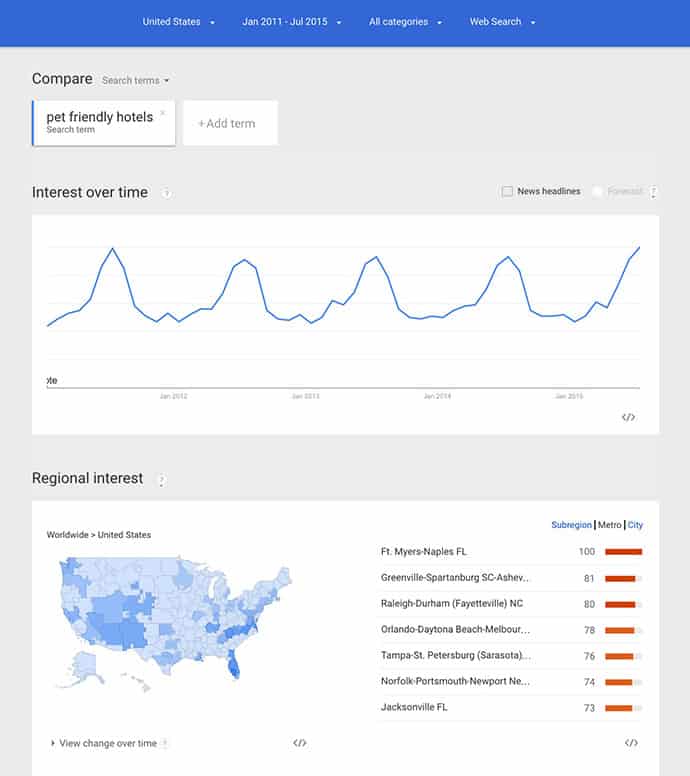
Have you used Google Trends for your marketing efforts before? Any other favorite insight-driving tips? Let us know in the comments below!
THE BEHIND THE SCENES OF THIS BLOG
This article has been written and researched following a precise methodology.
Our methodology


